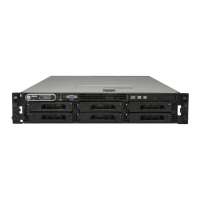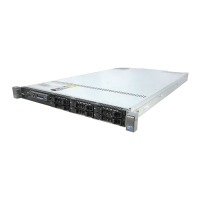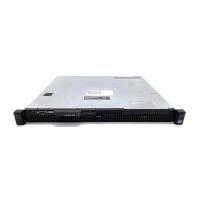BIOS Conguration Utility
The BIOS Conguration Utility, also known as Ctrl+R or Option ROM (OPROM), is a storage management application integrated into the
System BIOS accessible using F2 during system boot, which congures and maintains RAID disk groups and virtual disks on SATA drives.
The BIOS Conguration Utility (Ctrl+R) is independent of the operating system.
NOTE: Use the Ctrl+R for initial setup and disaster recovery. You can use advanced features through OpenManage storage
management applications.
NOTE: Conguring NVMe PCIe SSDs is not supported using the BIOS conguration
utility.
NOTE: Ensure that you use only the S140 UEFI conguration utility to congure the NVMe PCIe SSDs during preboot. To enable
RAID mode for NVMe PCIe SSDs, see Setting the NVMe PCIe SSDs to RAID mode .
NOTE: RAID conguration using OPROM is not supported on systems with the NVMe PCIe
SSD.
The following sections provide information about using the Ctrl+R. For more information, see the online help option by pressing F1 in the
Ctrl+R.
The table below indicates the tasks that are supported or not supported by the PERC S140 at the Ctrl+R.
Table 8. BIOS
Conguration Utility (Ctrl+R) Tasks
PERC S140 tasks Supported by S140
Enable alarm No
Disable alarm No
Quiet alarm No
Test alarm No
Set check consistency rate No
Rescan controller Yes
Create virtual disk Yes
Topics:
• Entering the BIOS conguration utility
• Exiting the BIOS Conguration Utility
• Initializing the physical disks
• Creating the virtual disks
• Deleting the virtual disks
• Swapping two virtual disks
• Managing the hot spare disks
• Viewing the physical disks details
• Viewing the virtual disks details
5
20 BIOS Conguration Utility

